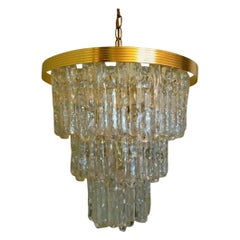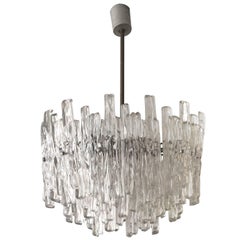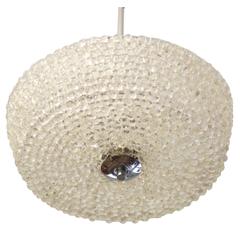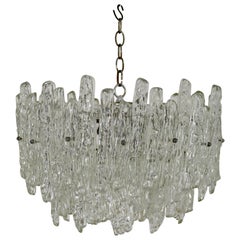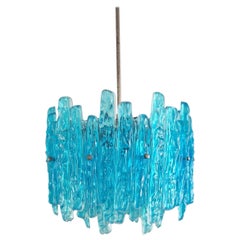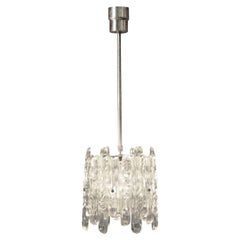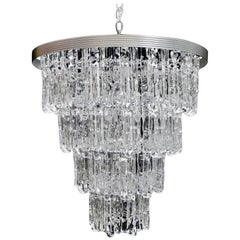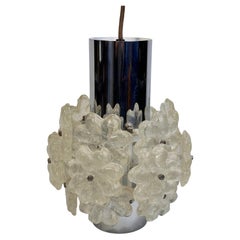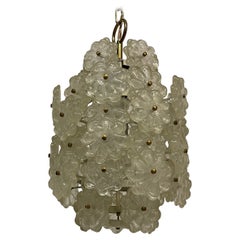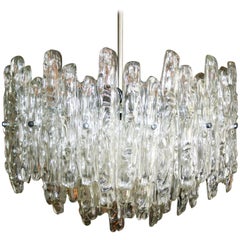Kalmar Lucite Chandelier
Vintage 1970s American Mid-Century Modern Chandeliers and Pendants
Brass
Vintage 1960s Austrian Mid-Century Modern Chandeliers and Pendants
Metal, Brass
Vintage 1960s American Mid-Century Modern Chandeliers and Pendants
Steel
Vintage 1960s Austrian Mid-Century Modern Chandeliers and Pendants
Metal
Vintage 1960s Austrian Mid-Century Modern Chandeliers and Pendants
Lucite
Vintage 1960s Italian Mid-Century Modern Chandeliers and Pendants
Metal
Vintage 1970s Mid-Century Modern Chandeliers and Pendants
Acrylic, Lucite
Vintage 1970s European Mid-Century Modern Chandeliers and Pendants
Metal
Vintage 1960s Austrian Mid-Century Modern Chandeliers and Pendants
Metal
Vintage 1970s American Mid-Century Modern Chandeliers and Pendants
Vintage 1960s Austrian Mid-Century Modern Flush Mount
Metal, Chrome
Vintage 1960s Austrian Mid-Century Modern Chandeliers and Pendants
Lucite
People Also Browsed
2010s American Modern Table Lamps
Steel, Brass, Silver Leaf
Vintage 1970s French Wall Lights and Sconces
Bronze
20th Century American Mid-Century Modern Chandeliers and Pendants
Brass
Recent Sales
Vintage 1970s Austrian Mid-Century Modern Chandeliers and Pendants
Brass
Vintage 1960s Austrian Chandeliers and Pendants
Metal
Vintage 1970s Austrian Mid-Century Modern Chandeliers and Pendants
Brass
Vintage 1970s Austrian Mid-Century Modern Chandeliers and Pendants
Metal, Brass
Vintage 1970s Austrian Mid-Century Modern Chandeliers and Pendants
Metal, Brass
Mid-20th Century German Mid-Century Modern Chandeliers and Pendants
Chrome
Mid-20th Century Mid-Century Modern Chandeliers and Pendants
Chrome
Vintage 1960s Austrian Mid-Century Modern Chandeliers and Pendants
Brass
Vintage 1950s Austrian Mid-Century Modern Chandeliers and Pendants
Crystal, Brass
Vintage 1960s Austrian Mid-Century Modern Flush Mount
Brass, Metal
Vintage 1960s Austrian Chandeliers and Pendants
Brass
Vintage 1980s Italian Mid-Century Modern Chandeliers and Pendants
Brass
Vintage 1970s American Chandeliers and Pendants
Metal
Vintage 1970s German Mid-Century Modern Chandeliers and Pendants
Lucite
Mid-20th Century North American Mid-Century Modern Chandeliers and Pendants
Metal, Brass
Vintage 1960s Austrian Mid-Century Modern Chandeliers and Pendants
Lucite
Mid-20th Century Italian Mid-Century Modern Chandeliers and Pendants
Iron
Vintage 1970s Austrian Mid-Century Modern Chandeliers and Pendants
Chrome, Nickel
Vintage 1970s Austrian Mid-Century Modern Chandeliers and Pendants
Chrome
Vintage 1960s Austrian Mid-Century Modern Chandeliers and Pendants
Steel
Vintage 1960s Austrian Mid-Century Modern Chandeliers and Pendants
Metal, Brass
Vintage 1960s Austrian Mid-Century Modern Chandeliers and Pendants
Metal, Brass
Vintage 1970s Austrian Modern Chandeliers and Pendants
Brass, Metal
Vintage 1970s Austrian Mid-Century Modern Chandeliers and Pendants
Brass, Nickel
Mid-20th Century Austrian Mid-Century Modern Chandeliers and Pendants
Metal, Brass
Vintage 1970s Austrian Mid-Century Modern Chandeliers and Pendants
Nickel, Brass
Vintage 1960s Austrian Mid-Century Modern Table Lamps
Metal
Vintage 1960s German Mid-Century Modern Wall Lights and Sconces
Crystal, Nickel
Vintage 1960s Austrian Mid-Century Modern Chandeliers and Pendants
Chrome
Vintage 1960s Austrian Mid-Century Modern Chandeliers and Pendants
Steel
Vintage 1960s Austrian Mid-Century Modern Chandeliers and Pendants
Lucite
Vintage 1960s German Mid-Century Modern Chandeliers and Pendants
Metal
20th Century Austrian Chandeliers and Pendants
Chrome
Vintage 1960s German Mid-Century Modern Chandeliers and Pendants
Metal
20th Century German Mid-Century Modern Chandeliers and Pendants
Metal
Vintage 1960s German Mid-Century Modern Chandeliers and Pendants
Chrome, Steel
20th Century Swedish Chandeliers and Pendants
Chrome
20th Century Chandeliers and Pendants
Brass
20th Century Chandeliers and Pendants
Chrome
Vintage 1960s Austrian Mid-Century Modern Chandeliers and Pendants
Chrome
Vintage 1960s Austrian Floor Lamps
Chrome, Steel
Vintage 1970s Austrian Mid-Century Modern Chandeliers and Pendants
Brass
Vintage 1960s Austrian Mid-Century Modern Chandeliers and Pendants
Chrome
Vintage 1960s Austrian Mid-Century Modern Chandeliers and Pendants
Brass
Kalmar Lucite Chandelier For Sale on 1stDibs
How Much is a Kalmar Lucite Chandelier?
A Close Look at Mid-Century Modern Furniture
Organically shaped, clean-lined and elegantly simple are three terms that well describe vintage mid-century modern furniture. The style, which emerged primarily in the years following World War II, is characterized by pieces that were conceived and made in an energetic, optimistic spirit by creators who believed that good design was an essential part of good living.
ORIGINS OF MID-CENTURY MODERN FURNITURE DESIGN
- Emerged during the mid-20th century
- Informed by European modernism, Bauhaus, International style, Scandinavian modernism and Frank Lloyd Wright’s architecture
- A heyday of innovation in postwar America
- Experimentation with new ideas, new materials and new forms flourished in Scandinavia, Italy, the former Czechoslovakia and elsewhere in Europe
CHARACTERISTICS OF MID-CENTURY MODERN FURNITURE DESIGN
- Simplicity, organic forms, clean lines
- A blend of neutral and bold Pop art colors
- Use of natural and man-made materials — alluring woods such as teak, rosewood and oak; steel, fiberglass and molded plywood
- Light-filled spaces with colorful upholstery
- Glass walls and an emphasis on the outdoors
- Promotion of functionality
MID-CENTURY MODERN FURNITURE DESIGNERS TO KNOW
- Charles and Ray Eames
- Eero Saarinen
- Milo Baughman
- Florence Knoll
- Harry Bertoia
- Isamu Noguchi
- George Nelson
- Danish modernists Hans Wegner and Arne Jacobsen, whose emphasis on natural materials and craftsmanship influenced American designers and vice versa
ICONIC MID-CENTURY MODERN FURNITURE DESIGNS
- Eames lounge chair
- Nelson daybed
- Florence Knoll sofa
- Egg chair
- Womb chair
- Noguchi coffee table
- Barcelona chair
VINTAGE MID-CENTURY MODERN FURNITURE ON 1STDIBS
The mid-century modern era saw leagues of postwar American architects and designers animated by new ideas and new technology. The lean, functionalist International-style architecture of Le Corbusier and Bauhaus eminences Ludwig Mies van der Rohe and Walter Gropius had been promoted in the United States during the 1930s by Philip Johnson and others. New building techniques, such as “post-and-beam” construction, allowed the International-style schemes to be realized on a small scale in open-plan houses with long walls of glass.
Materials developed for wartime use became available for domestic goods and were incorporated into mid-century modern furniture designs. Charles and Ray Eames and Eero Saarinen, who had experimented extensively with molded plywood, eagerly embraced fiberglass for pieces such as the La Chaise and the Womb chair, respectively.
Architect, writer and designer George Nelson created with his team shades for the Bubble lamp using a new translucent polymer skin and, as design director at Herman Miller, recruited the Eameses, Alexander Girard and others for projects at the legendary Michigan furniture manufacturer.
Harry Bertoia and Isamu Noguchi devised chairs and tables built of wire mesh and wire struts. Materials were repurposed too: The Danish-born designer Jens Risom created a line of chairs using surplus parachute straps for webbed seats and backrests.
The Risom lounge chair was among the first pieces of furniture commissioned and produced by celebrated manufacturer Knoll, a chief influencer in the rise of modern design in the United States, thanks to the work of Florence Knoll, the pioneering architect and designer who made the firm a leader in its field. The seating that Knoll created for office spaces — as well as pieces designed by Florence initially for commercial clients — soon became desirable for the home.
As the demand for casual, uncluttered furnishings grew, more mid-century furniture designers caught the spirit.
Classically oriented creators such as Edward Wormley, house designer for Dunbar Inc., offered such pieces as the sinuous Listen to Me chaise; the British expatriate T.H. Robsjohn-Gibbings switched gears, creating items such as the tiered, biomorphic Mesa table. There were Young Turks such as Paul McCobb, who designed holistic groups of sleek, blond wood furniture, and Milo Baughman, who espoused a West Coast aesthetic in minimalist teak dining tables and lushly upholstered chairs and sofas with angular steel frames.
Generations turn over, and mid-century modern remains arguably the most popular style going. As the collection of vintage mid-century modern chairs, dressers, coffee tables and other furniture for the living room, dining room, bedroom and elsewhere on 1stDibs demonstrates, this period saw one of the most delightful and dramatic flowerings of creativity in design history.
Materials: Plastic Furniture
Arguably the world’s most ubiquitous man-made material, plastic has impacted nearly every industry. In contemporary spaces, new and vintage plastic furniture is quite popular and its use pairs well with a range of design styles.
From the Italian lighting artisans at Fontana Arte to venturesome Scandinavian modernists such as Verner Panton, who created groundbreaking interiors as much as he did seating — see his revolutionary Panton chair — to contemporary multidisciplinary artists like Faye Toogood, furniture designers have been pushing the boundaries of plastic forever.
When The Graduate's Mr. McGuire proclaimed, “There’s a great future in plastics,” it was more than a laugh line. The iconic quote is an allusion both to society’s reliance on and its love affair with plastic. Before the material became an integral part of our lives — used in everything from clothing to storage to beauty and beyond — people relied on earthly elements for manufacturing, a process as time-consuming as it was costly.
Soon after American inventor John Wesley Hyatt created celluloid, which could mimic luxury products like tortoiseshell and ivory, production hit fever pitch, and the floodgates opened for others to explore plastic’s full potential. The material altered the history of design — mid-century modern legends Charles and Ray Eames, Joe Colombo and Eero Saarinen regularly experimented with plastics in the development of tables and chairs, and today plastic furnishings and decorative objects are seen as often indoors as they are outside.
Find vintage plastic lounge chairs, outdoor furniture, lighting and more on 1stDibs.
Finding the Right chandeliers-pendant-lights for You
Chandeliers — simple in form, inspired by candelabras and originally made of wood or iron — first made an appearance in early churches. For those wealthy enough to afford them for their homes in the medieval period, a chandelier's suspended lights likely exuded imminent danger, as lit candles served as the light source for fixtures of the era. Things have thankfully changed since then, and antique chandeliers and pendant lights are popular in many interiors today.
While gas lighting during the late 18th century represented an upgrade for chandeliers — and gas lamps would long inspire Danish architect and pioneering modernist lighting designer Poul Henningsen — it would eventually be replaced with the familiar electric lighting of today.
The key difference between a pendant light and a chandelier is that a pendant incorporates only a single bulb into its design. Don’t mistake this for simplicity, however. An Art Deco–styled homage to Sputnik from Murano glass artisans Giovanni Dalla Fina, with handcrafted decorative elements supported by a chrome frame, is just one stunning example of the elaborate engineering that can be incorporated into every component of a chandelier. (Note: there is more than one lighting fixture that shares its name with the iconic mid-century-era satellite — see Gino Sarfatti’s design too.)
Chandeliers have evolved over time, but their classic elegance has remained unchanged.
Not only will the right chandelier prove impressive in a given room, but it can also offer a certain sense of practicality. These fixtures can easily illuminate an entire space, while their elevated position prevents them from creating glare or straining one’s eyes.
Certain materials, like glass, can complement naturally lit settings without stealing the show. Brass, on the other hand, can introduce an alluring, warm glow. While LEDs have earned a bad reputation for their perceived harsh bluish lights and a loss of brightness over their life span, the right design choices can help harness their lighting potential and create the perfect mood. A careful approach to lighting can transform your room into a peaceful and cozy nook, ideal for napping, reading or working.
For midsize spaces, a wall light or sconce can pull the room together and get the lighting job done. Perforated steel rings underneath five bands of handspun aluminum support a rich diffusion of light within Alvar Aalto's Beehive pendant light, but if you’re looking to brighten a more modest room, perhaps a minimalist solution is what you’re after. The mid-century modern furniture designer Charlotte Perriand devised her CP-1 wall lamps in the 1960s, in which a repositioning of sheet-metal plates can redirect light as needed.
The versatility and variability of these lighting staples mean that, when it comes to finding something like the perfect chandelier, you’ll never be left hanging. From the natural world-inspired designs of the Art Nouveau era to the classic beauty of Paul Ferrante's fixtures, there is a style for every room.
With designs for pendant lights and chandeliers across eras, colors and materials, you’ll never run out of options to explore on 1stDibs — shop a collection today that includes antique Art Deco chandeliers, Stilnovo chandeliers, Baccarat chandeliers and more.
Read More
Why Is Italy Such a Hotbed of Cool Design?
Patrizio Chiarparini of Brooklyn’s Duplex gallery sheds light on the lasting legacy of Italy’s postwar furniture boom.
See How New York City Designers Experiment on Their Own Homes
There are many lessons to be learned from the lofts, apartments and townhouses of architects and decorators in Manhattan and beyond.
Jeff Andrews Captures Old Hollywood Glamour in His Cinematic Spaces
Having created extravagant homes for reality TV’s biggest stars, the designer is stepping into the spotlight with his first book.
New Orleans’ Lee Ledbetter Makes Design Magic by Mixing Past and Present
The Louisiana-born and -bred architect talks to 1stdibs about the art of making timeless places that matter.
Desert Modern Designer Arthur Elrod Finally Gets His Day in the Sun
The Palm Springs interior decorator developed a mid-century style that defined the vacation homes of celebrities and other notables, including Bob Hope and Lucille Ball.
From the Hamptons to Palm Springs, FormArch’s Homes Embody Both Comfort and Cool
The houses from this New York studio cloak modernist tendencies within what are often more traditional trappings.
